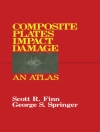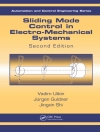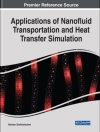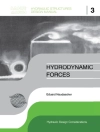The book presents a comprehensive treatment on a novel design theory that fosters innovative thinking and creativity essential for addressing wicked problems. Wicked problems are ill-defined, ambiguous in both aims and solutions, and complex with interconnected and intertwined (coupled) factors. While being ubiquitous and difficult, however, wicked problems share characteristics common to science and design in three regards, namely agent finitude, system complexity, and problem normativity. These fundamental attributes allow a core cognitive process common to design and science to be identified and a strategic problem-solving conception of methodology be formulated as a result. The theory facilitates new opportunities for synergetic cross-disciplinary research and practice by incorporating the essences of Extenics to axiomatic design. Innovative thinking is enabled by exploring Extenics for problem reframing, paradigm shift, and abductive reasoning and by engaging axiomatic design in the co-evolution (iteration) of the need and viable design concept. The theory is unique in that it is a framework for quantifying imprecise and vague design information available during the conceptual design stage as mathematical expression and algorithm early in the design effort and enables the objective evaluation and emergence of an optimal design concept from among multitude of viable ones. The book is conceived for students and real-world practitioners in engineering, natural and social sciences, business, and fine arts who seek to develop powerful design thinking for solving problems in a creative and innovative way.
Innehållsförteckning
Introduction.- Need Identification and Analysis.- Axiomatic Design Principles.- Extenics.- Design Innovation by Synergy.- Innovative Design Methodology.- Design Decoupling Methodology.- Closures.
Om författaren
Dr. Wenjuan Li received her Ph.D. degree in Vehicle Engineering from China Agricultural University in 2018. She is currently a postdoctoral fellow with the School of Transportation Science and Engineering at Beihang University, China. She establishes herself as an expert in innovative design methodologies applicable to product design, system modeling, software development, and information management. She has published 6 peer-reviewed technical papers in international journals and conferences. She is a member of CAAI and serves as a reviewer of several SCI journals.
Dr. Zhenghe Song received his B.E. degree in Design & Manufacturing for Automobile and Tractor from Shandong University of Technology, Shandong, China, in 1995, the M.E. degree in Design & Manufacturing for Agricultural Machinery, and the Ph.D. degree in Vehicle Engineering from China Agricultural University, Beijing, in 1997 and 2000. Since December 2010, he has been in College of Engineering, China Agricultural University, as a professor. He focuses on the research of the design and experimental method for off-road vehicle. His recent research interests include: digital design, ergonomics design, intelligent control, advanced manufacturing and field experiment for agricultural machinery equipment, etc. Since 1998, he has published 160 technical papers in journals and conferences. He is the director of National Virtual Simulation Experimental Teaching Center for Mechanical and Agricultural Engineering, and the Beijing Key Laboratory of Modern Agricultural Equipment Optimization Design, the deputy director of National Key Laboratory of Tractor Power System, the member of Chinese Society of Agricultural Engineering and Chinese Society of Agricultural Machinery.
Dr. C. Steve Suh is a faculty in the J. Mike Walker ’66 Mechanical Engineering Department at Texas A&M University, USA. He is also an ASME fellow. While being the director of the Institute for Innovation and Design in Engineering (IIDE), he actively promoted university–industry collaborations on developing innovative engineering solutions and providing enhanced design education to engineering students. A seasoned engineer of years of real-world experience, he has worked with a broad spectrum of companies including Ford Motor, Boeing, Schlumberger, Surgimedics, Shell Global Solutions, and Applied Materials, to name a few, on projects ranging from system integration to manufacturing design to software development. His interests in 1) nonlinear time–frequency control theory, 2) advanced manufacturing, 3) engineering design theory, 4) ultrafast laser dynamics, 5) 3D microelectronic packaging, and 6) complex networks have resulted in exceeding 170 scientific publications, 9 chapters, and book volumes including “Control of Cutting and Machining Instability: Time-Frequency Approach for Precision, Micro and Nano Machining” and “Machine Tool Vibrations and Cutting Dynamics.” As the director of the Nonlinear Engineering and Control Laboratory, he has delivered more than 3 dozens invited speeches on topics ranging from chaos control to innovative design education to dynamic failure theory. He is currently the editor-in-chief of Vibration Testing and System Dynamics, an interdisciplinary journal serving as the forum for promoting dialogues among engineering practitioners and research scholars on the synergy of system dynamics, testing, design, modeling, and education. He is also serving as an associate editor for the following 3 internationally renowned archival journals—International Journal of Dynamics and Control, Journal of Applied Nonlinear Dynamics, and Discontinuity, Nonlinearity, and Complexity.












